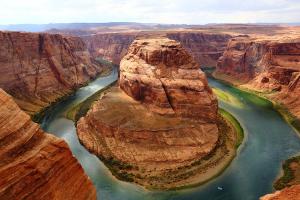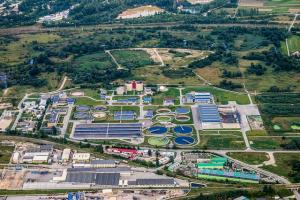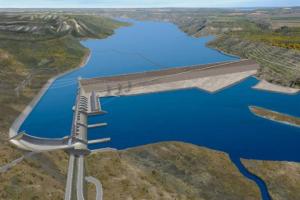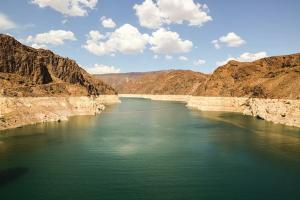How and Where to Plan Reservoirs
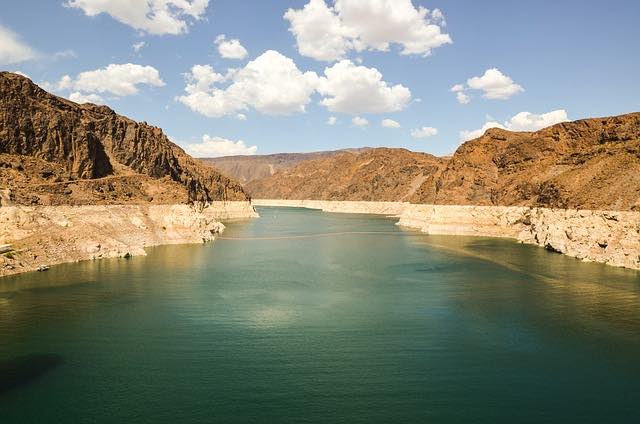
A natural or artificial place where water is collected and stored for use, especially water for supplying a community, irrigating land, furnishing power, etc is known as reservoir.
One major consideration in the development of any surface water resource project is the structural stability of the reservoir which should be capable of containing safely the projected volumes of water for use throughout its life time. The main factors to be considered for this are as follows:
Factors Affecting Location of Reservoirs
One major consideration in the development of any surface water resource project is the structural stability of the reservoir which should be capable of containing safely the projected volumes of water for use throughout its life time. The main factors to be considered for this are as follows:
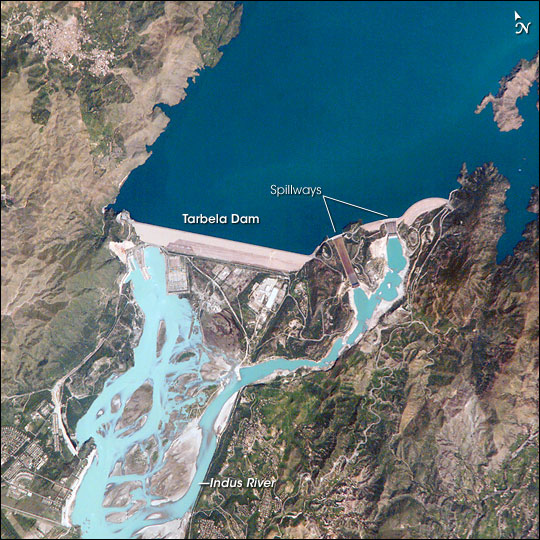
Giant Reservoir of Tarbela Dam
- Rim stability
- Water-holding capability
- Loss of reservoir water
- Bank storage,
- Seismicity, and
- Sedimentation
Rim stability and water-holding capability are interrelated. Rim failure can be caused due to either the sliding or the erosion of a segment of the reservoir rim. Seepage of water is mainly responsible for such failures. Major slides into a reservoir would, obviously, reduce reservoir capacity considerably. Similarly, snow avalanches and masses of ice falling from hanging glaciers can cause serious problems. Besides reducing the capacity of the reservoir, a rapidly moving slide may also generate waves.
A dam may be over topped due to the resulting wave action or rise of the water surface on account of a major slide into the reservoir. If the reservoir site is likely to be affected by the slides and cannot be abandoned, some restraining steps in reservoir operation should be taken to avoid serious failure. These steps could be in the form of limiting the filling and draw-down rates or imposing the maximum allowable water surface at a level lower than the maximum normal water surface. Alternatively, installation of drains to relieve water pressure along likely slip surfaces, some form of impervious lining, and pinning the unstable mass of its parent formation by rock bolting can be resorted to for preventing slides.
Stabilization of the unstable mass can also be achieved by strengthening or replacing weak material. Grouting is the most common remedy for strengthening such weak masses. It may be desirable to plan the steps to be taken to mitigate the effects of potential slide after it has occurred in spite of all preventive steps. Reservoir water loss either to the atmosphere or to the ground can be a controlling factor in the selection of a site for a conservation reservoir. For a flood control reservoir, water loss is of concern only if it relates to the safety of the project. The lining of the surface through which seepage is expected is one of the preventive measures to reduce the reservoir water loss to the ground. At times, a blanket of impervious material extending from the heel of the dam is required. This too serves to control the seepage from the reservoir.
Loss of reservoir water to the atmosphere occurs due to direct evaporation from the reservoir surface. The evaporation losses are affected by the climate of the region, shape of the reservoir, wind conditions, humidity, and temperature. From considerations of evaporation, a reservoir site having a small surface area to volume ratio will be better than a saucer-shaped reservoir of equal capacity. Evaporation-retardant chemicals increase the surface tension of water by forming a monomolecular film and thus reduce evaporation. Bank storage is the water which spreads out from a body of water, filling interstices of the surrounding earth and rock mass. This water is assumed to remain in the surrounding mass and does not continue to move to ultimately join the ground water or surface water as seepage water does. The bank storage is not mitigable. It must, however, be estimated for feasibility investigations and measured during reservoir operation for providing guidelines for reservoir regulation.
It appears that there is some effect of reservoir impoundment on the increased seismic activity of an area in which a large reservoir (having a storage capacity of more than 12 × 108 m3 behind a dam higher than 90 m) has been constructed . However, there have been large reservoirs without increasing the seismic activity of the region. The increased seismic activity is attributed to the changes in the normal effective stresses in the underlying rock because of the increased pore pressure. The transmission of the hydrostatic pressure through discontinuities in the underlying rock can have a triggering effect where a critical state of stress already exists. The relationship between the reservoir impoundment and the earthquake relationship is not fully understood. Hence, it is necessary that every large reservoir site be subjected to detailed geologic, geodetic, and seismic studies for feasibility decision. These observations must be continued during the reservoir operations too in order to better understand the relationship between reservoir impoundment and seismic activity.
The streams bringing water to the reservoir bring sediments too. The sediment gets deposited in the reservoir due to the reduced stream velocity. The capacity of the reservoir is reduced on account of sediment deposition in the reservoir. Usually, a portion of the reservoir storage is reserved for the storage of the sediment. The life of a reservoir is predicted on the basis of the amount of sediment delivered to it, the reservoir size, and its ability to retain the sediment. Sediment deposition at the initial stage may be beneficial in the sense that it may have the effect of a natural blanket resulting in reduced seepage loss. Measures to minimize sediment deposition in reservoirs include catchment protection through a vegetative management program to prevent soil erosion, silt detention basins at inlets of smaller reservoirs, and low level outlets in dams to provide flushing action for removal of sediment from the reservoir. Of the various measures, the catchment protection is the most effective and also the costliest.



